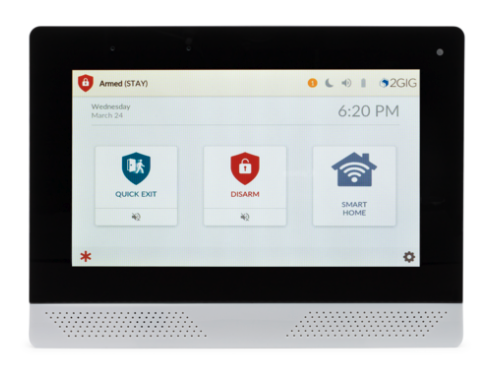Happy Thanksgiving 2022 From Your Friends at Alarm Grid
Posted By Julia RossThe year 2022 is quickly drawing to a close, with about 30 shopping days left until Christmas. But before we jump ahead to the next holiday, we wanted to take a moment to reflect and give thanks in honor of Thanksgiving. It's one of our favorite holidays, with a simple goal of togetherness.
If you'll be traveling this Thanksgiving, be sure to lock your doors and arm your alarm system. Your system can't do its job until you do your part. If you have smoke detectors connected to your system you should definitely test them regularly. Whether your system is armed or disarmed, smoke detectors are always active when properly configured.
So that our dedicated support and planner staff can celebrate with their families, Alarm Grid will be closed all day on Thursday, November 24, 2022, for Thanksgiving. We'll be back bright and early on Friday, November 25 at 9:00 am. Of course, our monitoring station operates 24/7/365, so for those customers who have chosen full central station monitoring, your system will be continuously monitored by trained operators who stand ready to respond to any alarm you may have.
If you need to contact the monitoring station, either to report a false alarm or to put your system on test, you can call Criticom Monitoring Services (CMS) at (888) 818-7728 and choose Option [9]. This is the process for Alarm Grid customers who reside within the United States. Once an operator answers, you'll need to supply your name, address, and false alarm password.
For our Canadian customers, our monitoring partner in Canada is Rapid Response. They can be reached at (800) 932-3822. Remember, when you call either monitoring station you will be asked for your name and address, and to verify your false alarm password or phrase. Providing the wrong information, or providing the Duress password, will result in a police dispatch.
If you have a support question or need to make adjustments to your account, the monitoring station won't be able to assist you with that. In that case, send an email to support@alarmgrid.com with your request and we'll get back to you as soon as possible when we return to the office on Friday. There can be a bit of a backlog, so please be patient while we catch up.
2022 has been a year for reacquiring a solid footing in the post-COVID-shutdown era. We've dealt with supply chain issues, sudden discontinuation of some products, and name or model number changes in others while manufacturers struggle to meet the demands of their customers, and by extension, our customers. The waters are choppy, and we're navigating them to the best of our ability. We appreciate you staying in the boat with us. We will arrive at the dock together, safely.







